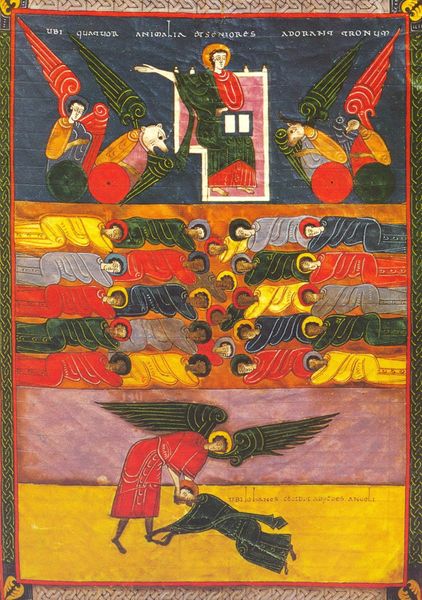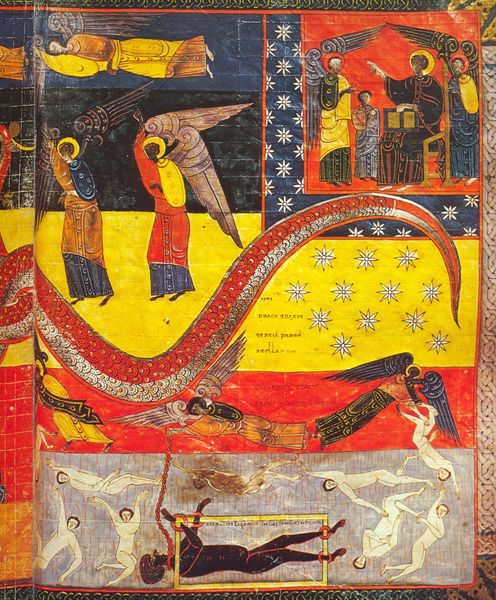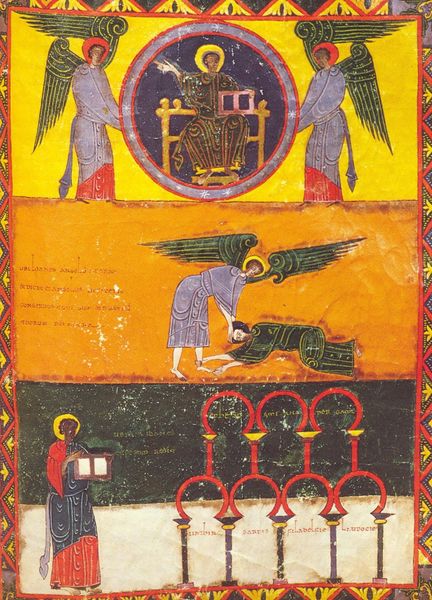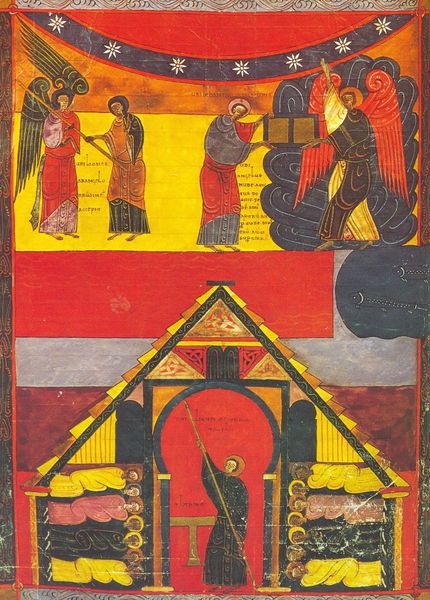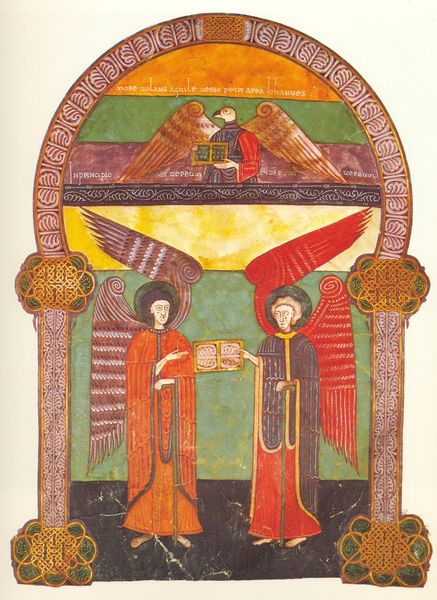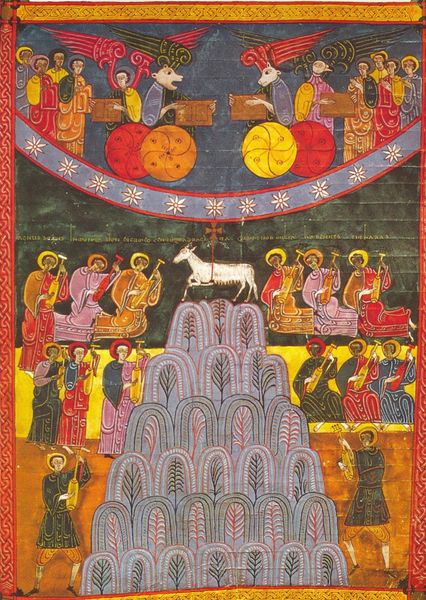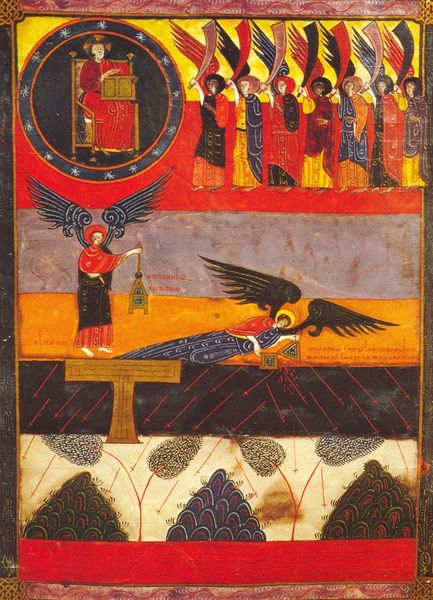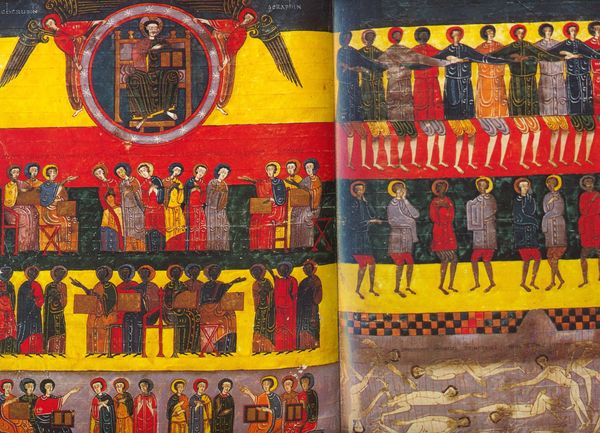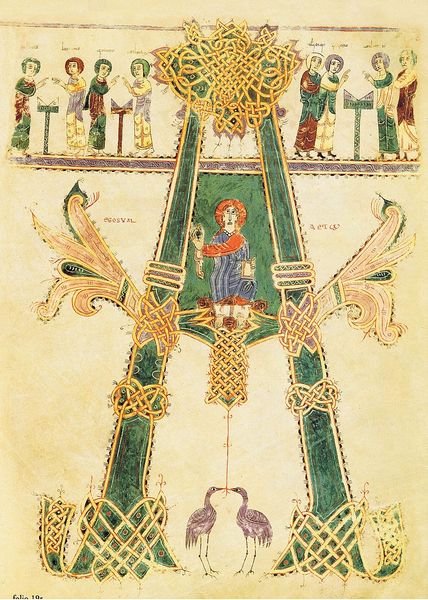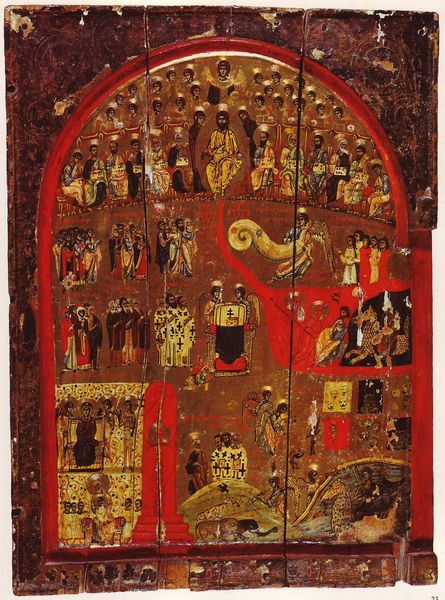
painting
#
medieval
#
narrative-art
#
painting
#
figuration
#
romanesque
#
naive art
#
painting art
Copyright: Public domain
Editor: This is the "Beato de Gerona," a painting dating back to 975 created by the artist Ende. The composition is striking, so flat and decorative with those rows of figures. It gives a feeling of the otherworldly. What exactly is being portrayed here? Curator: It depicts a scene from the Book of Revelation, a key text during the medieval period when apocalyptic anxieties were high and the church held immense social power. We must consider the cultural and institutional roles that art fulfilled then. Editor: Right, I see that. Curator: What do you notice about the architecture within the painting itself, and how does that reflect the position of the artist and of the commissioner in society? Editor: The angels above the altar look incredibly important, standing up tall in organized lines while another casts a man off the alter in what almost looks like a rage. The person above seems more important. This hierarchy speaks of the religious institutions of that time. Curator: Precisely! Think about the political ramifications: Ende, a female artist in a male-dominated society, creates an image reinforcing the existing power structures, seemingly for the benefit of the religious elite and its role in solidifying the kingdom. Does this artwork support or subtly undermine existing sociopolitical hierarchies, even unintentionally? Editor: I think it upholds the social hierarchy and supports the church at this time. Curator: By understanding this painting's historical context and the motivations behind its creation, we can better understand how art serves as a political tool to impact cultural reception. This was not created simply for aesthetic pleasure. Editor: I learned a lot about how art functions as social and political validation. Thank you for broadening my understanding. Curator: My pleasure, viewing it this way contextualizes this art as more than a flat image from long ago; instead, as an artwork embedded with powerful historical purpose.
Comments
No comments
Be the first to comment and join the conversation on the ultimate creative platform.

